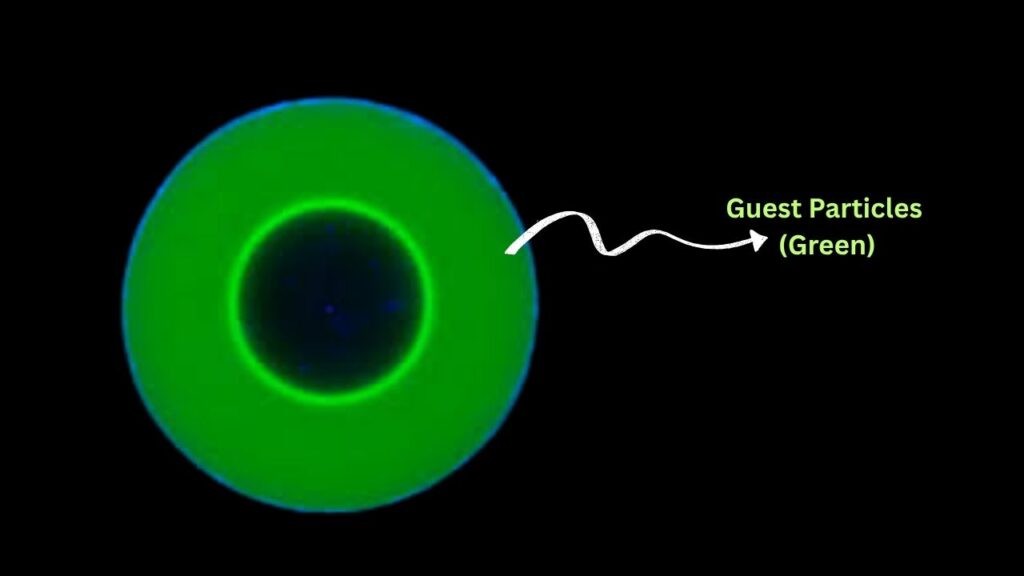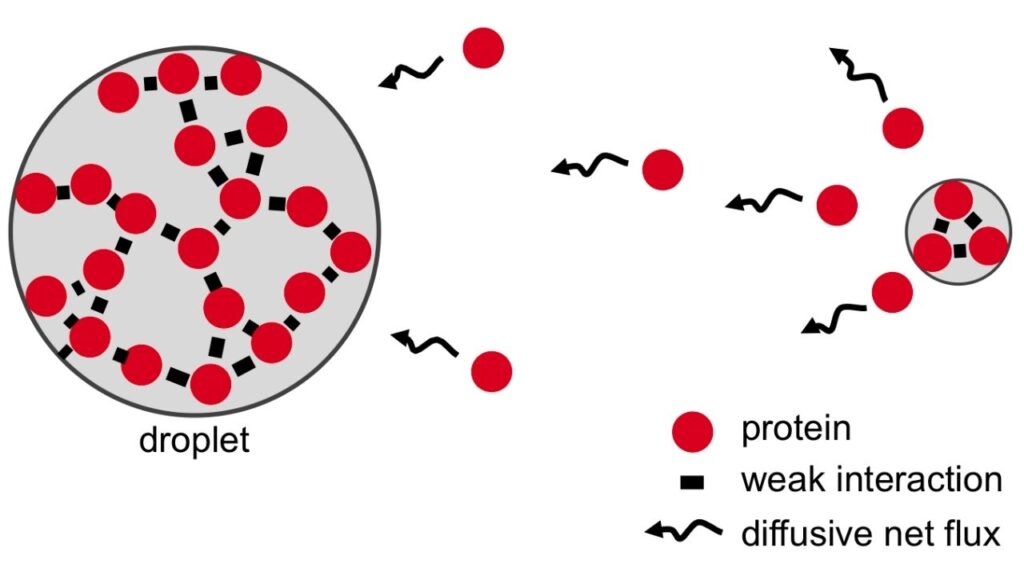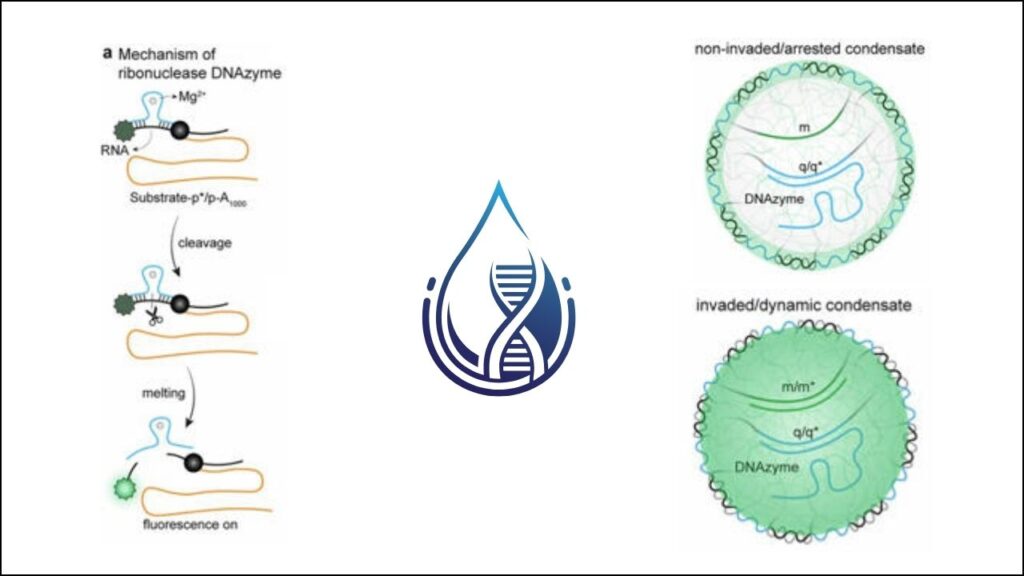Unknown Type of Molecular Movement: In a breakthrough that could reshape our understanding of biology and material science, researchers have identified a previously unknown type of molecular movement inside DNA droplets. This discovery, made by an international team from Johannes Gutenberg University Mainz (JGU), the Max Planck Institute for Polymer Research, and the University of Texas at Austin, reveals that “guest molecules” move through DNA-based droplets not by random diffusion, but in a structured, wave-like motion.

This surprising find, published in Nature Nanotechnology, opens new doors for both fundamental science and practical applications in medicine and engineering.
Unknown Type of Molecular Movement
| Feature/Fact | Details |
|---|---|
| Discovery | Guest molecules move through DNA droplets in a frontal wave, not by random diffusion |
| Institutions Involved | Johannes Gutenberg University Mainz, Max Planck Institute for Polymer Research, University of Texas at Austin |
| Potential Applications | Intelligent biomaterials, programmable drug delivery, synthetic cell systems, neurodegenerative disease research |
| Significance | Challenges traditional diffusion models, offers new insight into cellular organization |
| Published In | Nature Nanotechnology (June 2025) |
| Official Website | JGU Research Press Releases |
The identification of a previously unknown type of molecular movement—where guest molecules ride a wave through DNA droplets—marks a major leap in molecular science. This discovery not only challenges what we thought we knew about molecular motion but also opens up new possibilities for medicine, biotechnology, and material science. As researchers continue to explore this phenomenon, the future looks bright for innovations that harness the power of organized molecular motion.
What Is Molecular Movement?
Molecular movement is how molecules travel and interact within a material or living system. Traditionally, scientists believed that in liquids or gels, molecules spread out through a process called diffusion. Imagine dropping a bit of blue dye into a glass of water: the color slowly spreads, becoming lighter as it mixes with the water. This process is random and unorganized.
But what if molecules could move in a more organized way—like a wave rolling through the ocean? That’s exactly what this new discovery shows.
The Discovery: Guest Molecules Ride the Wave
How Did Scientists Find This?
The research team created droplets made up of thousands of DNA strands, called biomolecular condensates. These droplets are similar to tiny compartments inside cells that help organize and control biological reactions—without needing a membrane or wall.

They then introduced special “guest molecules” into these DNA droplets. Instead of spreading randomly, the guest molecules moved in a clear, organized front—like a wave—cutting through the droplet. This was completely unexpected and unlike anything seen before in molecular biology.
“This is an effect we did not expect at all,” said Weixiang Chen, a lead researcher from JGU’s Department of Chemistry.
What Makes This Movement Different?
- Traditional Diffusion: Molecules move randomly, creating blurry, soft gradients (like dye in water).
- New Wave Motion: Guest molecules advance in a sharp, well-defined front—like a marching band moving in formation, not a crowd wandering in all directions.
Professor Andreas Walther, who led the research, explained:
“The molecules move in a structured and controlled manner that is contrary to the traditional models, and this takes the form of what appears to be a wave of molecules or a mobile boundary.”
Why Does This Matter? (For Kids and Pros Alike!)
For Curious Kids
- Imagine a parade: Instead of people wandering everywhere, everyone moves together in a neat line. That’s how these molecules move—organized and together!
- Why is it cool? It helps us understand how tiny parts of our body work and talk to each other.
For Professionals and Scientists
- Biological Significance: This wave-like movement may explain how cells organize complex reactions without membranes, helping us understand diseases and aging at a molecular level.
- Engineering Potential: The discovery could lead to new materials that control how molecules move, creating smarter drug delivery systems, advanced filters, and synthetic cells that mimic nature.
How Does the Wave Motion Work? A Step-by-Step Guide

1. Building DNA Droplets
- Scientists use thousands of DNA strands to create droplets, mimicking cell compartments.
- These droplets are called biomolecular condensates.
2. Adding Guest Molecules
- Specially designed DNA “guest” strands are introduced.
- These guests can recognize and bind to parts of the droplet, like a key fitting into a lock.
3. Watching the Movement
- Instead of spreading out randomly, the guest molecules form a moving front.
- As the guest strands bind, they change the local density, causing a wave to move through the droplet.
4. Understanding the Mechanism
- The movement is powered by chemical binding and programmable DNA interactions.
- The wave continues as long as there are guest molecules and binding sites available.
Real-World Applications and Future Impact
1. Intelligent Biomaterials
- Materials that can control how and where molecules move—useful for sensors, filters, and self-healing materials.
2. Programmable Drug Delivery
- Imagine a medicine that releases its active ingredient in a controlled wave, targeting only the right spot in the body.
3. Synthetic Cell Systems
- Building artificial cells that organize their internal processes just like real ones, paving the way for advanced biotechnology.
4. Neurodegenerative Disease Research
- Understanding how proteins and other molecules move inside aging cells could lead to new treatments for diseases like Alzheimer’s and Parkinson’s.
Quantum Sensing Technology Matures for Defense and Semiconductor Applications
Advances in Quantum Computing and Hybrid Quantum-Classical Workflows
FAQs About Unknown Type of Molecular Movement
What is a “guest molecule”?
A guest molecule is a molecule that enters and interacts with a larger “host” structure, like a visitor in a house. In this study, the guests are DNA strands entering DNA droplets.
How is this movement different from diffusion?
Diffusion is random and slow, while the new movement is organized and fast, moving as a sharp front or wave.
Why use DNA droplets?
DNA droplets closely mimic the tiny compartments inside real cells, making them perfect for studying complex molecular behavior.
What could this discovery lead to?
Smarter medicines, better materials, and a deeper understanding of how life works at the smallest level.
Is this just a lab curiosity or does it have real-world uses?
Both! It helps us understand biology and could lead to new technologies in healthcare and engineering.






